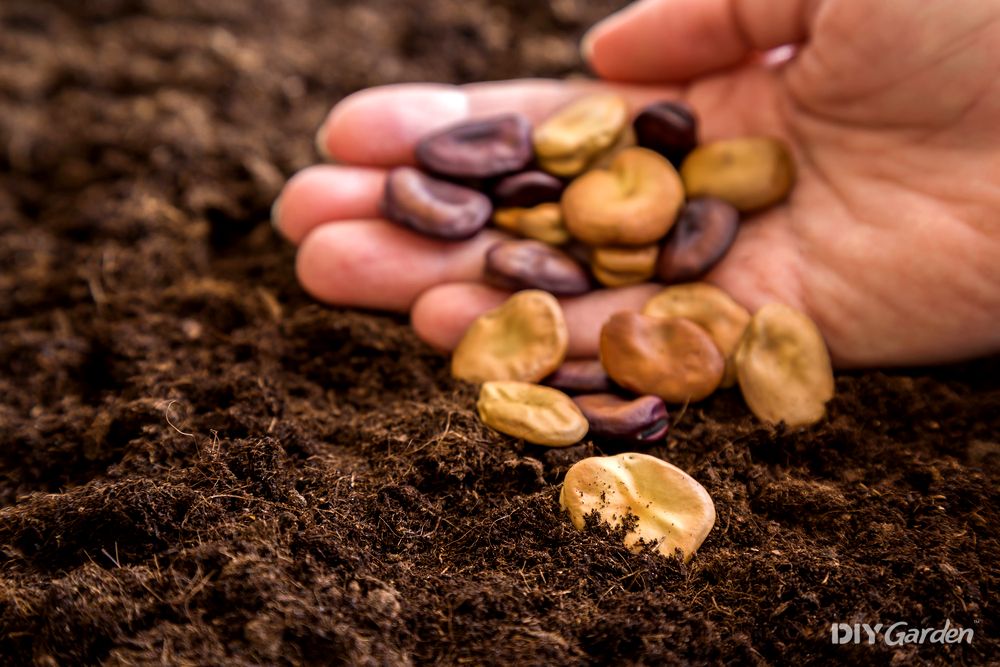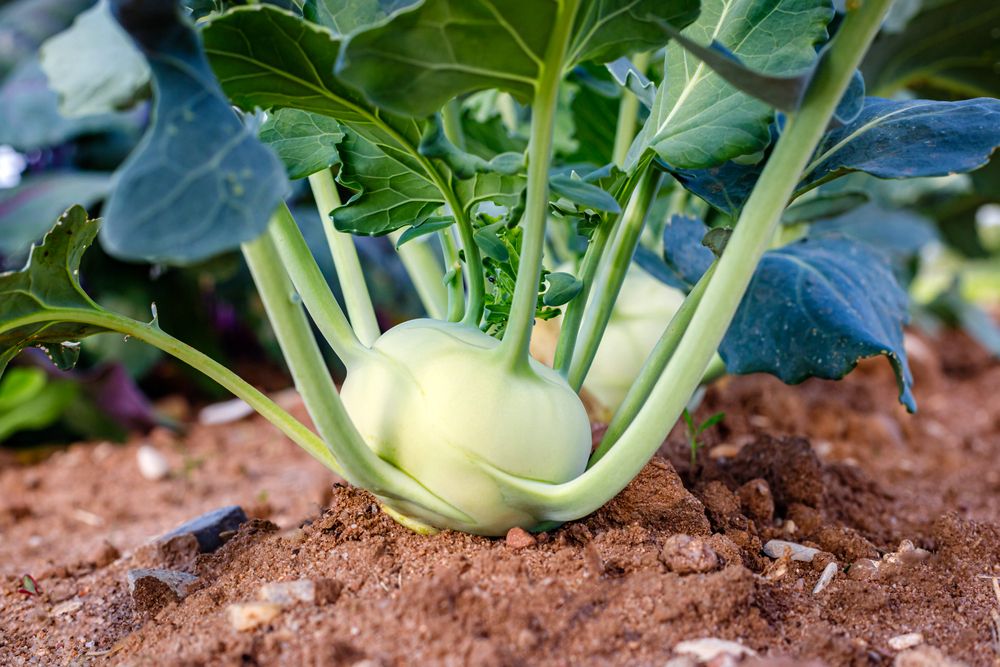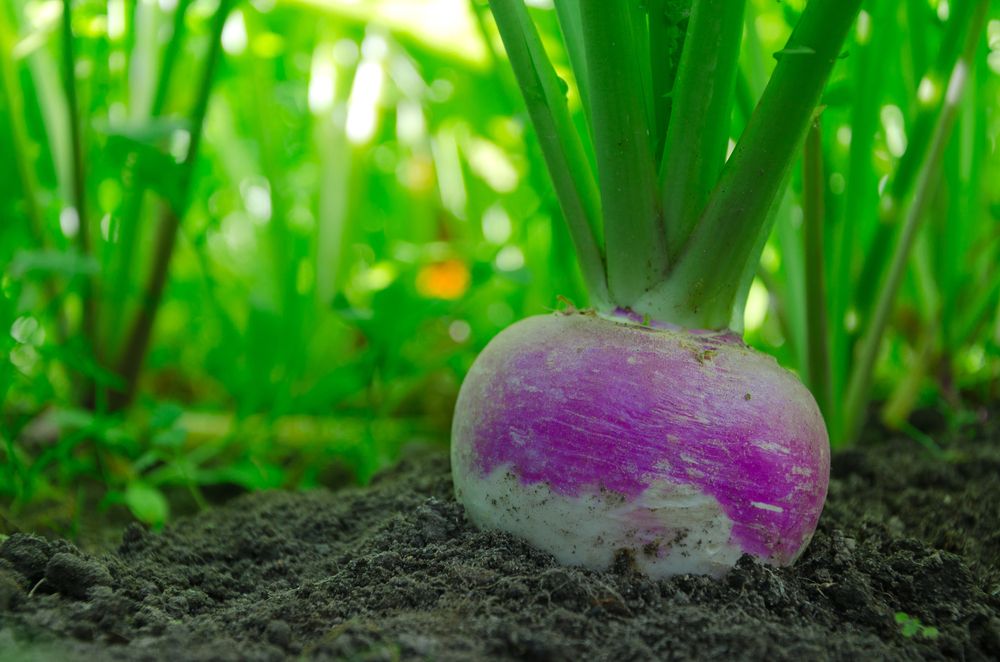
What to Plant in March
Things start to get much busier in the garden once March rolls around. With the spring equinox signalling the official start of the warmer months ahead, it’s the perfect time to get sowing and growing a wide variety of different delicious crops.
Not sure where to begin? Here are 10 fruit & vegetables to plant in March:
1. Asparagus
Asparagus may be a prolific perennial crop, but it’s one that requires a fair amount of patience. You’ll need to wait at least a couple of years before your first harvest, and that’s assuming you’ve planted crowns – if you start your plants from seed, your wait will be even longer. Either way, March is the perfect time to get planting if you’re aiming for an established asparagus bed that’ll feed you for years to come.
When starting with crowns, make sure that your asparagus bed is weed-free, as this is a crop that doesn’t do well when its roots have competition. Then, plant each crown about 30cm deep, spacing them 30cm apart.
If you’d prefer to start with seeds, sow them individually, about 1cm deep, in small pots of compost. Ideal germination temperatures for asparagus seeds are between 24-30ºC – a heated propagator will help keep things consistent. The seeds can take 2-10 weeks to germinate, after which you’ll need to continue growing them on under cover until your last frost has passed.
2. Parsnips
Not only do parsnips need a long growing season, but the seeds themselves can take up to a month to germinate, making it important to get them in the ground early in the year. However, while some people start their parsnips off in February, March sowings will produce much stronger and healthier plants that will quickly catch up to any that were sown in February.
Since parsnips hate being transplanted, it’s always best to direct sow the seeds. Keep in mind that parsnip seeds don’t have a very long shelf life – the fresher your seeds, the better your germination rates will be.
Once you’ve prepared your growing area, sow your seeds about 1cm deep. Ideally, each parsnip should be spaced 15-20cm apart, but don’t worry if you sow your seeds too thickly – you can always thin them out once they sprout. Keep your parsnip seedlings moist and weed-free and your crop should be ready for harvesting come autumn.
3. Spinach
A popular leafy green that’s famed for its rich nutrient profile, spinach does best in cooler temperatures, meaning that the best sowing times are early spring and late summer. Like with other leafy greens, many gardeners choose to successionally sow spinach to extend their harvesting season, and March is the perfect time to get your first lot of seeds for the year in.
So long as your ground isn’t frozen, spinach can be sown directly outdoors – it doesn’t mind a bit of frost. However, if you’re hoping to be picking leaves as soon as possible, start your first batch off under cover. The extra heat and protection will encourage faster seedling growth, after which you can then plant them out.
Sowing spinach seeds is easy – simply place each seed 2-3cm deep into a module of multi-purpose compost. A temperature of 15°C will ensure optimum germination, but the seeds will sprout in slightly higher or lower temperatures too.
4. Brussel Sprouts
Brussel sprouts need a longer growing season than most other brassicas. So, if you’re hoping to add some homegrown Brussel sprouts to your Christmas dinner this year, you’ll need to get sowing in March.
Since Brussel sprout seeds need warmth to germinate (25°C is the optimum germination temperature), it’s usually best to start the seeds off indoors. Use modules filled with multi-purpose compost, planting each seed about 2cm deep. Give them heat and water and your seeds should sprout in 1-2 weeks.
Once seedlings appear, move your modules to an area where they’ll receive plenty of light. You’ll be transplanting your plants in about a month, so you need to ensure that they grow to be strong and sturdy during this time, rather than lanky and leggy.
5. Beetroot
While most people grow beetroot for those deliciously sweet roots, all parts of the beetroot plant are edible, making it a fantastic multi-purpose crop for the garden. Even better, beetroot is low-maintenance and relatively fast-growing – pick the right varieties and you could be munching on your first harvest in less than two months.
When sowing beetroot seeds in March, you can either direct sow them if your soil has warmed up slightly (they need a minimum temperature of 7°C to germinate) or start them off under cover, which will give you an earlier harvest. Either way, sow your seeds about 2.5cm deep into multi-purpose compost – you should see signs of life after about 10 days.
It’s worth mentioning that each beetroot seed contains a group of smaller seeds, so you may notice multiple seedings sprouting for each seed that you’ve sown. You can start to thin them out once they’re about a week old, leaving 10cm of space between each plant.
6. Kohlrabi
Not only is kohlrabi a fan of cooler temperatures, but it’s also a fast grower – plants usually mature about two months after sowing. As a result, it’s best to successionally sow kohlrabi throughout the spring and autumn months, with your first sowing taking place in March.
To direct sow your kohlrabi seeds, make sure that your growing area is weed-free. Then, sow your seeds about 1cm deep. So long as outdoor temperatures remain above 4.5°C, your seeds should germinate in 1-2 weeks. Once they do, thin them out to leave 15cm of space between each plant.
If you live in a colder region and are still expecting a couple of months of hard frosts, then start your seeds off indoors. This provides the advantage of warmer temperatures – give your seeds the optimum 21°C and not only will they sprout faster, but they’ll also grow quicker.
7. Broad Beans
The best time of year to sow broad beans is in March or early April. Wait too much longer than this and you’ll notice a significant reduction in the number of pods produced by your mature plants.
Since broad beans are one of the hardiest and fastest-growing types of beans, they can be direct sown outdoors. Place each seed 5cm deep into the ground, spacing them 15-20cm apart. Some varieties will need more space while others will need less.
So long as temperatures remain above 2°C, your seeds should germinate in about 10 days. Don’t worry too much if you end up with an unexpected cold spell post-germination – most broad bean varieties can withstand temperatures as low as -10°C, and you can easily throw a fleece over the top of your seedlings if conditions are set to be even colder than this.
8. Kale
A strong and healthy kale plant will continue to feed you throughout the winter months. However, in order for a kale plant to thrive in such a vigorous way, seeds are best sown in March and April, so that the plants can get the growth boost that they need from the rising temperatures.
If outdoor temperatures are above 7°C, then direct sow your kale outside, about 1cm deep. Some gardeners choose to net their growing area until seedlings have firmly rooted, as this prevents birds and other wildlife from uprooting them while they’re still delicate.
Alternatively, since kale doesn’t mind being transplanted, seeds can be started in modules under cover too. Give them temperatures of around 18°C and they should germinate in 1-2 weeks. You’ll then need to grow your seedlings on until each plant has about five sets of true leaves before hardening them off and planting them out.
9. Celery & Celeriac
Although they’re treated as different vegetables, celery and celeriac are essentially the same plant, apart from the fact that some varieties are grown for their stems while others are grown for their roots. Celeriac is also a little hardier, but both do well when sown in March.
Both are sown in the same way too. The best results are seen when seeds are sown into modules or small pots first (about 0.5cm deep), before being transplanted outside later in the spring. For optimum germination, keep your seeds at around 15°C and be patient – they can take up to a month to germinate.
If you like the idea of growing celery but prefer low-maintenance perennials, rather than annuals, consider growing lovage instead. It’s fast-growing, extremely hardy, and looks beautifully structural in a garden. Just like with celery, March is ideal for sowing lovage seeds too!
10. Early Turnips
Turnip varieties usually fall into one of two categories; early, for harvesting through the summer, and maincrop, which matures in the colder months. Early turnips, which can be sown in March, grow quickly – you could be harvesting golf ball-sized roots in just a couple of months.
Being a root crop, turnips do best when they don’t have to deal with any root disturbances, so direct sow your seeds if possible. For optimum germination, sow your seeds about 1cm deep into a weed-free planting bed.
Turnip seeds don’t need much heat to germinate. So long as they have temperatures warmer than 4°C, they should sprout in 1-2 weeks. Once they do, thin your seedlings out to leave 20-30cm between each plant.
Summary
From slow-growing root crops to vigorous leafy greens, there are so many different fruits and vegetables to sow in March. Get these crops growing while temperatures are gradually heating up and it won’t be long before you’re enjoying your first harvests.










